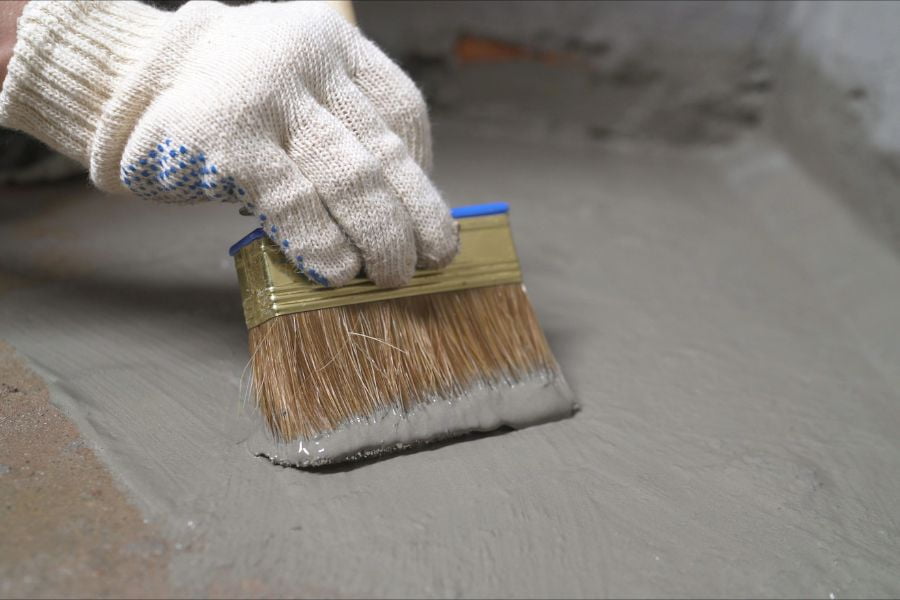Water damage is one of the most common and expensive problems homeowners face. A leaky basement can cause significant damage to your home’s foundation, walls, and floors, not to mention the potential health risks associated with mould and mildew. Waterproofing your basement is an essential step in protecting your home from water damage, and it’s a project that can be done yourself with the right materials and tools. In this article, we’ll explore the materials you need to waterproof your basement and the steps you can take to do it yourself.
Materials Needed for Waterproofing Your Basement
Before you begin your basement waterproofing project, you’ll need to gather the necessary materials. Here are some of the materials you’ll need:
- Waterproofing paint: Waterproofing paint is a coating that is applied to the walls of your basement to create a barrier against water. This type of paint is specially formulated to resist water and prevent moisture from seeping through the walls.
- Waterproofing membrane: A waterproofing membrane is a thick, rubber-like material that is applied to the walls and floors of your basement to prevent water from seeping through. This material is applied using a roller or brush and creates a barrier that prevents water from entering your basement.
- Sump pump: A sump pump is an electric pump that is installed in the basement to remove water that accumulates in the sump pit. The sump pit is a small hole in the floor of your basement that collects water and directs it to the sump pump.
- French drain: A French drain is a type of drainage system that is installed around the perimeter of your basement to collect water and direct it away from your home. This system involves digging a trench around the foundation of your home and installing a pipe that carries water away from your basement.
- Sealant: A sealant is a substance that is applied to the walls and floors of your basement to fill in any cracks or gaps that may allow water to seep through. This material is typically applied using a caulk gun or other applicator.
Steps for Waterproofing Your Basement
Now that you have your materials gathered, it’s time to begin the waterproofing process. Here are the steps you can take to waterproof your basement yourself:
Step 1 – Identify the source of the water: Before you begin waterproofing your basement, you’ll need to identify where the water is coming from. This may involve inspecting your basement for signs of water damage, such as wet spots or mould growth.
Step 2 – Repair any cracks or gaps: Once you’ve identified the source of the water, you’ll need to repair any cracks or gaps in your basement walls or floors. This can be done using a sealant or other material designed for this purpose.
Step 3 – Apply waterproofing paint: After you’ve repaired any cracks or gaps, it’s time to apply the waterproofing paint. This material is applied using a roller or brush and creates a barrier against water.
Step 4 – Apply waterproofing membrane: If you’re using a waterproofing membrane, you’ll need to apply it to the walls and floors of your basement. This material is applied using a roller or brush and creates a barrier that prevents water from seeping through.
Step 5 – Install a sump pump: If you’re experiencing significant water accumulation in your basement, you may need to install a sump pump. This involves digging a hole in your basement floor and installing the pump and sump pit.
Step 6 – Install a French drain: A French drain can be installed around the perimeter of your basement to collect water and direct it away from your home. This involves digging a trench around the foundation of your home and installing a pipe that carries water away from your basement.
Step 7 – Maintain your waterproofing system: Once you’ve completed the waterproofing process, it’s important to maintain your system to ensure it continues to function properly. This may involve regular inspections, cleaning, and repairs as needed.
Tips for Successful Basement Waterproofing
While waterproofing your basement can be a DIY project, it’s important to take the necessary precautions to ensure your project is successful. Here are some tips for successful basement waterproofing:
- Address any water issues promptly: If you notice water damage or signs of water accumulation in your basement, address the issue promptly to prevent further damage.
- Use high-quality materials: When it comes to waterproofing your basement, using high-quality materials can make a significant difference in the effectiveness of your system.
- Follow manufacturer instructions: Be sure to carefully read and follow the instructions provided by the manufacturers of your waterproofing materials to ensure proper application.
- Consider professional assistance: If you’re unsure about your ability to successfully waterproof your basement, consider seeking professional assistance from a licensed contractor with experience in basement waterproofing.
Conclusion
Water damage is a common problem that can cause significant damage to your home and your health. Waterproofing your basement is an essential step in protecting your home from water damage, and it’s a project that can be done yourself with the right materials and tools. By following the steps and tips outlined in this article, you can successfully waterproof your basement and enjoy a dry, healthy living space.
The team at IcyReno is equipped with the latest waterproofing technology and are experts in their field. With years of experience, we have the skills to tackle any project – large or small. If you feel that you can’t tackle the job alone and need help waterproofing your home, IcyReno has the know-how to get the job done quickly and efficiently. Put your trust in IcyReno and contact us today – you won’t be disappointed!
